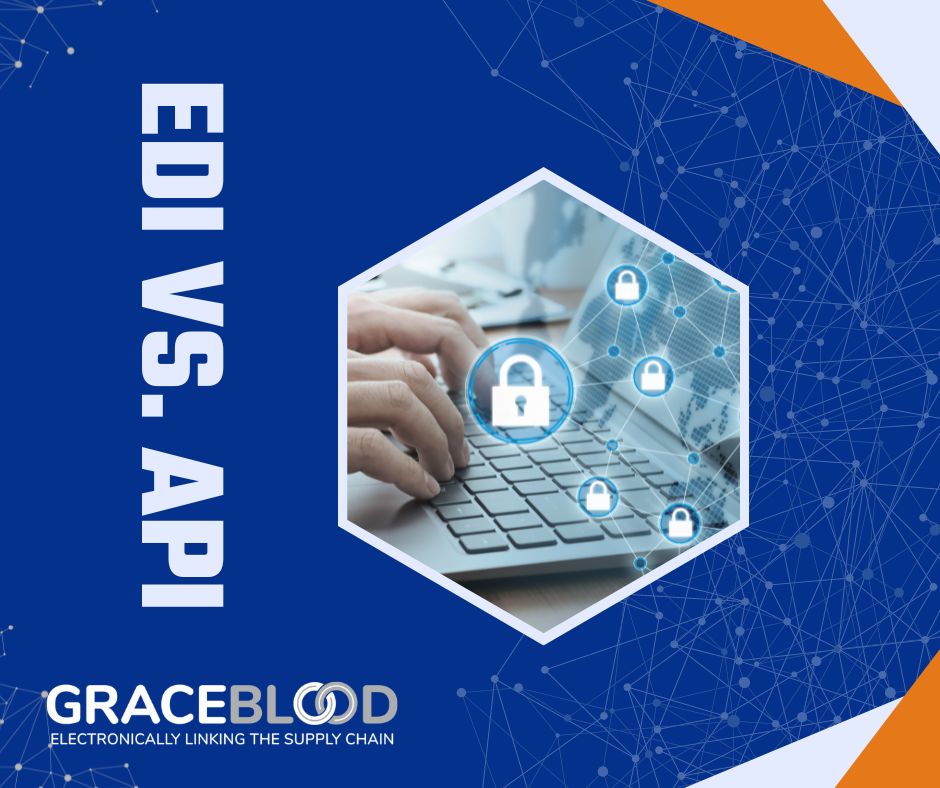 Photo appears courtesy of Dan4th Nicholas. You’ve been doing EDI for years. You’ve got a phenomenal software package (extra points if it’s Liaison’s Delta/ECS). Your top 30%, 40%, even 50% of your supply chain is connected through EDI document exchanges. You have eliminated most manual processes. And through the use of EDI, you have built strong trading partner relationships. Yet, you have tens or even hundreds of suppliers who are still receiving orders from you either via email or even FAX. At some point your business stopped pursuing EDI deeper into the supply chain. Common reasons cited include costs to the supplier to become EDI capable, internal costs to setup and manage a new EDI trading partner, effort is required to educate and convince the suppliers to adopt EDI, and finally, there are more pressing projects needing focus and attention. But as your company extends EDI further, the cost per transaction to handle non-integrated data rises. There has been a lot written about supplier enablement in recent years, including a lot of discussion about bullying practices. This blog will not go in to all of that. I simply want to talk about why hub organizations need to consider onboarding their entire supplier community.
Photo appears courtesy of Dan4th Nicholas. You’ve been doing EDI for years. You’ve got a phenomenal software package (extra points if it’s Liaison’s Delta/ECS). Your top 30%, 40%, even 50% of your supply chain is connected through EDI document exchanges. You have eliminated most manual processes. And through the use of EDI, you have built strong trading partner relationships. Yet, you have tens or even hundreds of suppliers who are still receiving orders from you either via email or even FAX. At some point your business stopped pursuing EDI deeper into the supply chain. Common reasons cited include costs to the supplier to become EDI capable, internal costs to setup and manage a new EDI trading partner, effort is required to educate and convince the suppliers to adopt EDI, and finally, there are more pressing projects needing focus and attention. But as your company extends EDI further, the cost per transaction to handle non-integrated data rises. There has been a lot written about supplier enablement in recent years, including a lot of discussion about bullying practices. This blog will not go in to all of that. I simply want to talk about why hub organizations need to consider onboarding their entire supplier community.
Wikipedia describes the benefits of supplier enablement being, “…reduced supply chain costs, improved invoice tracking, reduced procurement costs, reducing or eliminating non-value added (manual) processes, and improved communications.” Many hubs do not fully invest in a supplier enablement program for fear of alienating their suppliers, which is a valid concern. But I say, “Go big or go home.” You’re not fully realizing the benefits of EDI or data integration when 50% of your suppliers are still doing business with you over email! The key to selling EDI onboarding to your supplier community is making them understand the benefits to them, as well as offering them affordable and user friendly options. Below I have outlined the most basic benefits of EDI implementation for both the hub and the supplier.
Benefits to the Hub
- Business Analytics – Manual processes leads to bad data. Not only does bad data cost money to fix, but bad data can persist once it has been imported in a system, and that bad data can play havoc with analytics, just like a cancer. Nathan Camp of Liaison Technologies wrote in a recent guest blog, “Allowing the company leadership to make informed path decisions, allowing sales and marketing to target emerging opportunities, and providing procurement with a complete picture of purchase history and buying power is all dependent on access to clean, trusted, and fresh data.”
- Lower Human Capital Costs – While most research organizations tag the manual process for non-integrated business transaction processing as between $18 and $35 depending on the transaction type, I’d like to take a much more conservative estimate. Let’s say you pay a part time employee $12 per hour to process data. Add in a few dollars per hour for office space, utilities, and equipment. It usually takes 10 to 15 minutes for a paper document to be reviewed, entered, and filed by a skilled data entry person. That leaves a per transaction cost being somewhere in the $4 to $5 per document range. If your company processes over 5 documents per month, I have a solution candidate to discuss with you.
- Less Errors – Wherever there is human intervention, you introduce errors, both with outgoing POs and incoming invoices. The average human error rate in data entry is 3 to 5%. It takes 3 times as long to identify and resolve these errors. Venture capitalist Tomasz Tunguz shares in his blog what physicist Stephen Hawking told him, “The cost to fix a data error at the time of entry is $1. The cost to fix it an hour after it’s been entered is $10. And the cost to fix it several months later is $100+.”
- Better Visibility – EDI provides you with quantitative details so you can identify your strong suppliers and weed out the weak ones. Real-time visibility into your supply chain helps you plan for unforeseen events such as out-of-stocks or shipping delays.
Benefits to the Supplier
- Faster Payments – EDI cuts the order-to-cash cycle dramatically. What used to take weeks now happens in a matter of days, leading to better cash flow. This is the life blood of your supply chain.
- Competitiveness – Being EDI capable makes you that much more competitive in the marketplace. Give yourself an advantage and level the playing field with larger competitors.
- Improved Customer Relations – Exchanging business documents with your customer via EDI makes you easier and cheaper to do business with. EDI leads to better business relationships.
- Paper Reduction – Implementing EDI with your customer leads to less paper usage, therefore less waste and less need for storage. This leads to a significant cost savings.
Why hasn’t your company done more with EDI?
The usual answers are as follows:
- “It costs the suppliers too much.” This used to be true. 15 years ago, entry level EDI solutions could cost $1,500 or more just to get setup. This is no longer the case. Based on the “Benefits to the Hub” cost analysis above, EDI solutions now cost less than what it costs your business to process 10 non-EDI transactions per month
- “Suppliers refuse to do EDI.” Of course they don’t want to change the way they do things. But if your organization helps provide them with an alternative solution that can nimbly move them to EDI compliance, and ultimately EDI integration later, their willingness to adopt increases
- “EDI costs our business too much to add new trading partners.” If you have EDI software, it should be relatively easy to add new partners that follow your EDI specifications. If you use a VAN service, the costs to transact data should now only cost pennies.
- “We don’t have the resources to train suppliers on EDI.” That’s not a problem if you work with a resource that can reach out to your suppliers to educate them on the benefits of EDI, and how the solution you helped broker for them can be used
- “We are content with the amount of EDI we transact – 80% of our business is conducted via EDI.” As we saw above, the last 20% of non-EDI transactions adds up quickly. In today’s ultra-competitive landscape, your competition is going to cut their costs and eek more margin out of their profits. EDI is often simply an overlooked piece of low hanging fruit, if you have the right tools.
Get started with EDI: Speak to an expert








